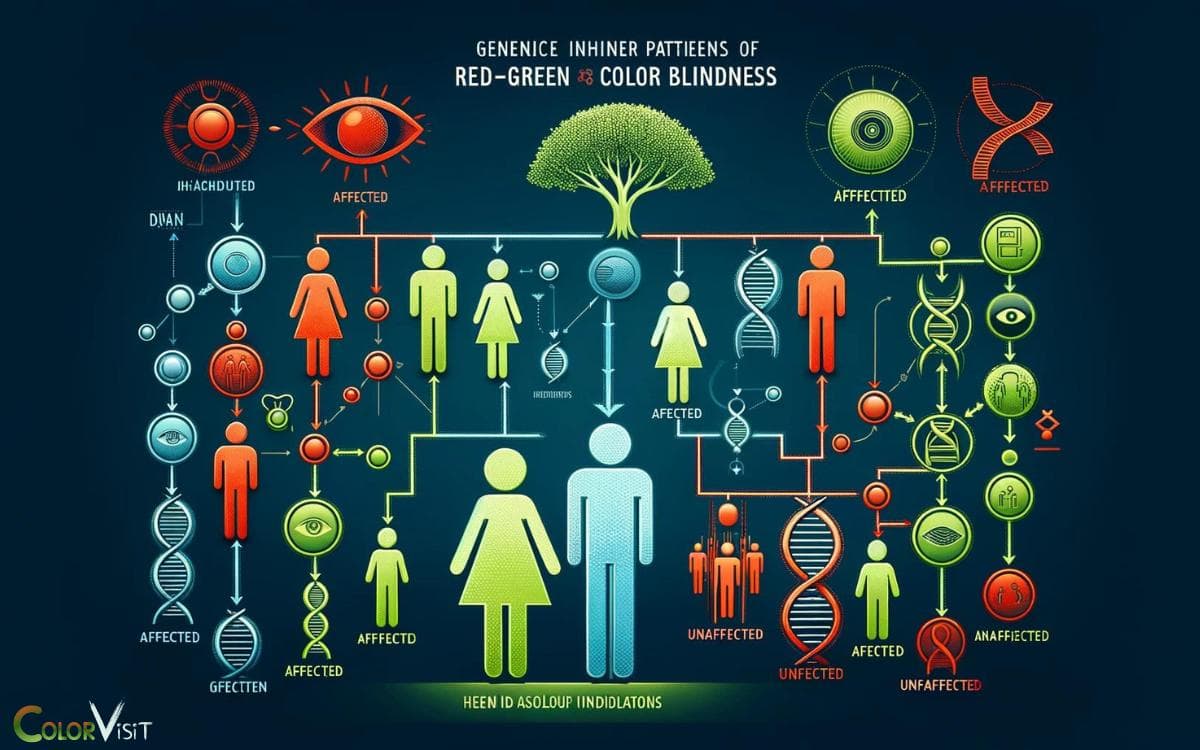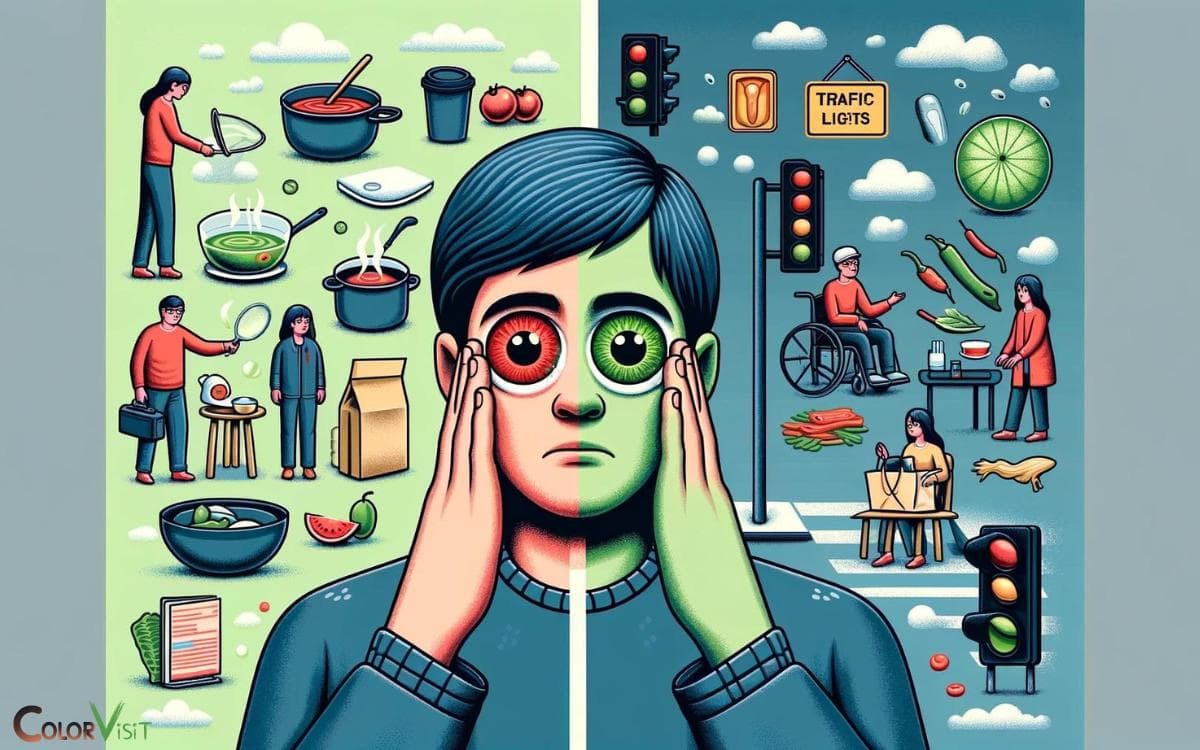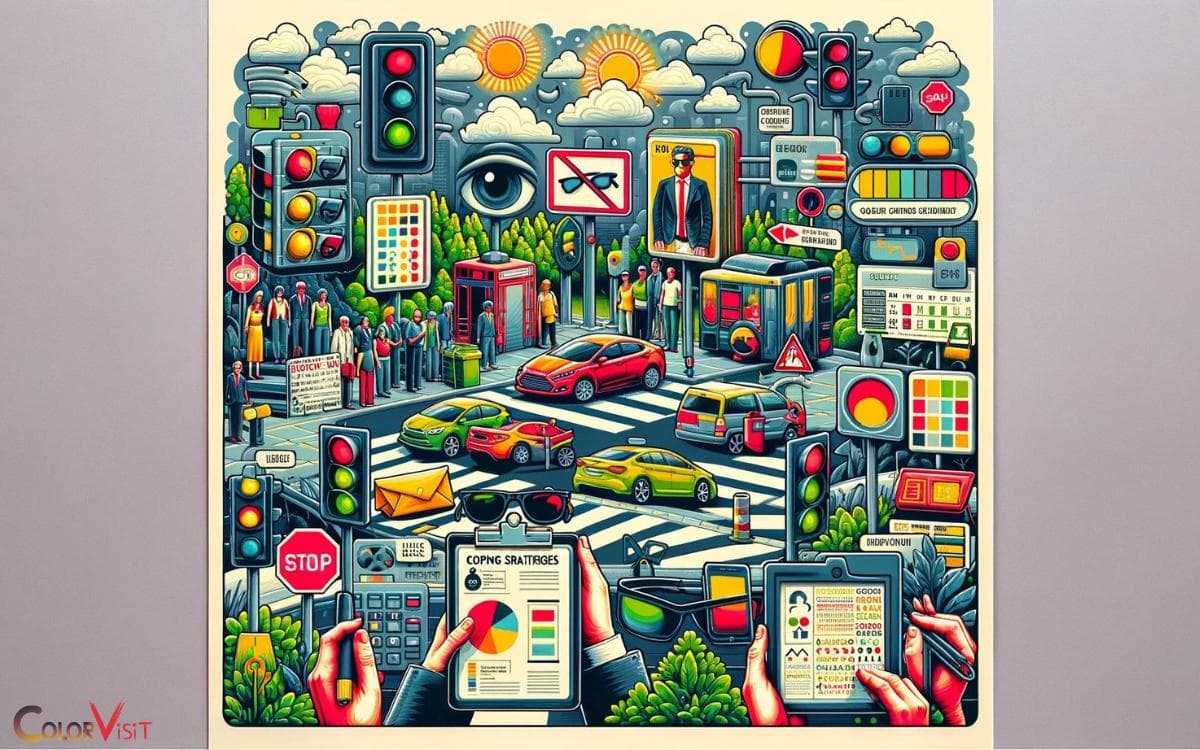Facts About Red Green Color Blindness: Deficiency!
Red-green color blindness, a prevalent form of color vision deficiency, impacts millions globally. It’s genetically inherited and hinders the ability to distinguish between red and green shades.
Red-green color blindness is a genetic condition that affects the perception of colors, specifically red and green. This condition is more common in males due to its X-linked recessive inheritance pattern, meaning that male carriers of color blindness can exhibit the traits more readily than females. Approximately 1 in 12 men are affected by this type of color vision deficiency, while the prevalence in women is significantly lower. Awareness and understanding of red-green color blindness are essential for providing support and accommodations in various settings.
This condition is the most common among color vision deficiencies, affecting a significant number of people worldwide.
Individuals with this condition struggle to differentiate between red and green hues, which can impact daily tasks such as driving or choosing ripe fruit.
Understanding red-green color blindness, its types, causes, and effects, is vital for affected individuals and those interacting with them to navigate life effectively.
Key Takeaway
Types of Red-Green Color Blindness
There are two main types of red-green color blindness that affect individuals with varying degrees of color perception deficiency.
- Protanopia, the first type, involves a reduced sensitivity to red light, causing a shift in the perception of green towards a more neutral point.
- Deuteranopia, the second type, results in a similar difficulty in differentiating between red and green, albeit with a differing balance.
- Treatment options for color blindness are limited, with visual accommodations such as specialized lenses being the most common solution.
- However, research advancements have shown promise in gene therapy as a potential treatment for certain types of color blindness.
- Understanding the distinct types of red-green color blindness is crucial for developing targeted interventions and solutions for affected individuals.
This understanding also underpins the exploration of genetic causes and inheritance patterns, which will be discussed next.
Genetic Causes and Inheritance Patterns
The genetic causes and inheritance patterns of red-green color blindness play a crucial role in understanding the transmission and manifestation of this condition in individuals affected by protanopia and deuteranopia.
- Genetic counseling is essential for individuals with a family history of red-green color blindness, as it can provide insights into the likelihood of passing the condition to offspring.
- Inheritance patterns of red-green color blindness follow an X-linked recessive pattern, where the gene responsible for the condition is located on the X chromosome.
- Males are more likely to inherit red-green color blindness due to having only one X chromosome, while females need two copies of the gene to express the condition.
- Understanding the genetic basis of red-green color blindness aids in the development of potential gene therapies and interventions.
- Research into the genetic mechanisms underlying red-green color blindness continues to drive advancements in precision medicine and personalized genetic therapies.
Symptoms and Diagnostic Tests
Color blindness can manifest in various ways, including difficulty distinguishing between certain colors or seeing colors as dull or washed out.
Common symptoms include:
- Difficulty reading color-coded information
- Trouble differentiating between shades of red and green
- Challenges with tasks that involve color recognition
Diagnostic tests for color blindness often involve the use of pseudoisochromatic plates to assess color perception and identify the specific type and severity of color vision deficiency.
Recognizing Color Blindness Symptoms
Recognizing symptoms of red-green color blindness often involves administering diagnostic tests to determine the extent of color perception deficiency. Common tests include the Ishihara plates, which use colored dots to assess the ability to distinguish between different colors. For those curious about how to test color blindness at home, simple online quizzes and apps can provide preliminary insights, although professional evaluation is recommended for an accurate diagnosis. These assessments help individuals understand their color vision capabilities and seek appropriate support if needed.
Some key indicators to recognize and manage color blindness symptoms include:
- Difficulty differentiating between red and green hues
- Confusion with shades of blue and purple
- Inability to perceive colors in low-light conditions
- Challenges in identifying color-coded information
- Color vision deficiency misconceptions, such as the belief that individuals with color blindness see the world in black and white
Color blindness awareness campaigns have played a crucial role in educating the public about the condition, leading to increased recognition of symptoms and early intervention.
Diagnostic Tests for Color Blindness
Administering diagnostic tests is crucial for accurately diagnosing and understanding the specific type and severity of color vision deficiency. Continuing from our previous discussion of recognizing color blindness symptoms.
- The Ishihara Color Test, which involves identifying numbers or patterns within a field of colored dots, is commonly used to diagnose red-green color vision impairment.
- Another test, the Farnsworth-Munsell 100 Hue Test, requires individuals to arrange color caps in the correct hue order, providing a more detailed assessment of color vision.
- Additionally, the Anomaloscope helps determine the type and severity of red-green color vision deficiency by matching the intensity of two different colored lights.
These tests aid in evaluating the extent of color vision impairment and are essential for accurate diagnosis and understanding of the condition.
Impact on Daily Activities
Individuals with red-green color blindness may face challenges in color recognition, particularly when distinguishing between red and green hues.
This can affect daily activities such as driving, selecting ripe fruits, and interpreting color-coded information.
However, adaptive strategies and tools, such as using color-correcting glasses or relying on alternative cues, can help mitigate these challenges and enable individuals to navigate their daily routines effectively.
Color Recognition Challenges
Red green color blindness’ impact on daily activities is significant for those affected by the condition.
The challenges in color perception can result in various difficulties, such as:
- Difficulty in distinguishing between red and green traffic lights
- Challenges in identifying ripe fruits and vegetables
- Issues with color-coded information in maps and graphs
- Struggles with color-coordinated clothing choices
- Limitations in perceiving certain art and media content
These challenges can lead to frustration and inconvenience in daily life, especially in situations where quick and accurate color recognition is essential.
Red-Green Color Blindness in the Workplace
People with red-green color blindness may face challenges in the workplace related to distinguishing between certain colors.
This visual impairment can impact various aspects of work, requiring specific accommodations and heightened visual impairment awareness.
Here’s a snapshot of how red-green color blindness can affect the workplace:
- Difficulty in interpreting color-coded information on charts, graphs, and maps
- Challenges in identifying colored wires, signals, and indicators in machinery
- Potential confusion in distinguishing between color-coded safety signs and labels
- Limitations in matching or coordinating colors in design, branding, or product development
- Issues with identifying ripe or unripe fruits and vegetables in food-related industries
Understanding these challenges and implementing workplace accommodations and visual impairment awareness can help create a more inclusive and supportive work environment for individuals with red-green color blindness.
Challenges and Coping Strategies
Individuals with red-green color blindness often encounter challenges in daily life that require adaptive strategies and support to navigate various situations.
- Coping mechanisms for managing color perception issues include utilizing color correction glasses or apps that assist in distinguishing between colors.
- In the workplace, individuals can benefit from clear communication regarding color-coded information and the use of alternative methods such as patterns or textures to convey information.
- Educational institutions can provide accommodations such as allowing extra time for color-dependent tasks or providing learning materials in accessible formats.
- Additionally, fostering awareness and understanding among colleagues and peers can create a supportive environment.
Embracing technological advancements, such as color-identifying tools and accessible design principles, can significantly aid individuals with red-green color blindness in overcoming daily challenges and thriving in diverse settings.
Support and Resources for Individuals
To better support individuals with red-green color blindness, it is essential to provide access to specialized resources and accommodations.
Some support and resources for individuals with red-green color blindness include:
- Support Groups: Joining support groups can provide a sense of community and understanding, allowing individuals to share experiences and coping strategies.
- Community Resources: Accessing community resources such as educational materials and awareness campaigns can help individuals and their families better understand and manage the condition.
- Assistive Technology: Utilizing assistive technology like color-correcting glasses, screen filters, and smartphone apps can enhance color perception and aid in daily activities.
- Color Filters: Using color filters in the form of specialized lenses or software can help individuals differentiate between red and green hues.
- Accessibility Accommodations: Implementing accessibility accommodations in public spaces and workplaces can ensure equal opportunities for individuals with color blindness.
Conclusion
Red-green color blindness is a genetic condition that affects the perception of red and green colors. It can impact daily activities and present challenges in the workplace.
However, individuals with this condition can employ coping strategies and access support and resources to navigate the challenges they face.
Red-green color blindness is like a puzzle with missing pieces, requiring individuals to adapt and find alternative ways to perceive the world around them.








